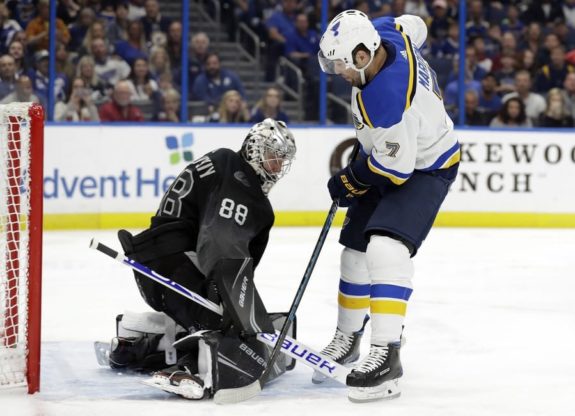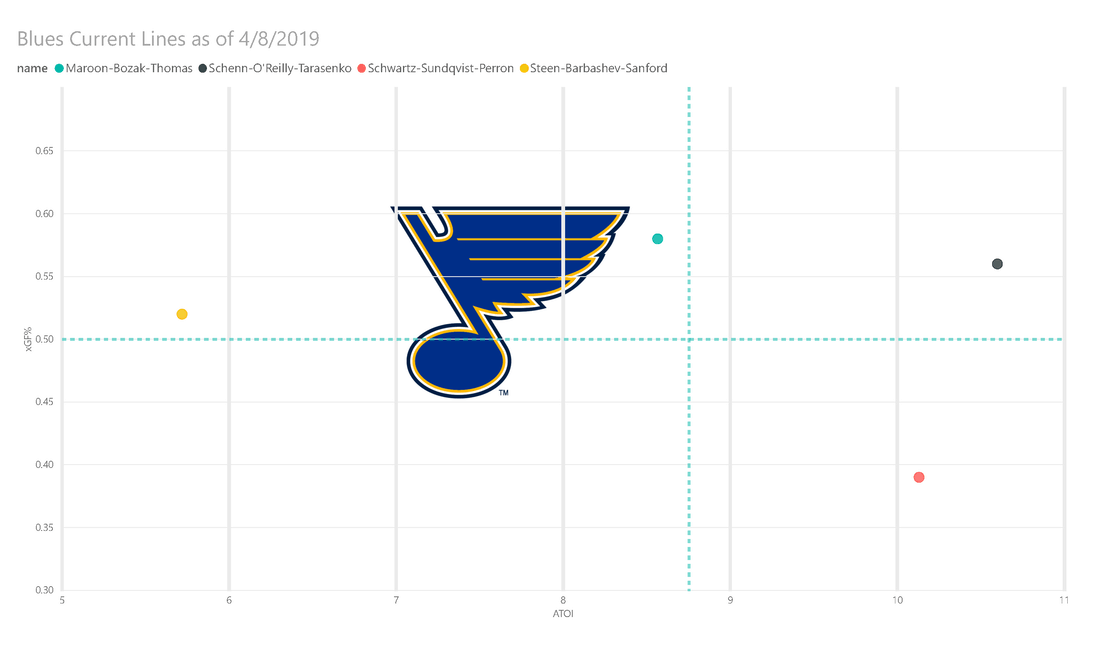Patrick Maroon scored the game-winning goal with under two minutes to go in the St. Louis Blues’ Game 3 victory over the Dallas Stars. The hometown kid from Oakville, Missouri scored on fellow St. Louisan Ben Bishop, placing a shot from in close underneath Bishop’s arm. It was one of a couple of memorable plays Maroon has made this postseason. The other most notable play came during the first round of the playoffs when Maroon held onto the puck and set-up Tyler Bozak for the game-winning goal in Game 1 of the series. That moment occurred a mere day after Maroon’s grandfather passed away.
Maroon is a feel good story. He took a pay cut to play for his hometown team, and to be close to his son, who lives in St. Louis. His play in honor of his grandfather was, by itself, a great moment of this postseason. There are many heartwarming articles to be written about Maroon’s 2018-19 season and playoffs. This article, however, is not about his personal story, it is about how he has earned his place in Blues history through his play. Maroon has always been a great hockey player, and he is now proving his talent on the sport’s biggest stage.
Advanced Statistics Have Always Been Favorable to Maroon
Below is a chart showing Maroon’s Expected Goals for Percentage (xGF%) and Corsi for Percentage (CF%) over the last five seasons:

Maroon’s team creates a significantly higher percentage of offense than their opponents do while he is on the ice. This was true regardless of where and who he has played with in his career. With the Edmonton Oilers, he was placed on a line with Connor McDavid, which certainly inflated his numbers. However, one could also argue that he was trusted to play with the game’s best player because of his talent. Even without McDavid with the New Jersey Devils and Anaheim Ducks, Maroon still produced solid advanced statistics.
Maroon’s Line Has Played a Huge Role for the Blues
In St. Louis, he has mostly played on a line with Robert Thomas and Tyler Bozak. Both Bozak and Thomas are great players, but neither is a star in the NHL at present, although Thomas has shown potential in his rookie season. Maroon, Bozak, and Thomas have mostly served as the Blues’ third line since January, and wreaking havoc on opposing defenses both in the regular season and now during the playoffs.

The chart below shows the line’s xGF% compared to the other Blues’ primary lines during the regular season. That third line had the highest xGF% of the Blues’ regular lines, and is notably the only prominent regular season line still intact in the second round of the playoffs.

Maroon creates offense through a combination of size, and puck handling ability. He is remarkably good on the cycle because his large frame allows him to protect the puck against most defenders. He has been extremely effective with Bozak and Thomas because they are both fast and intelligent players. Bozak and Thomas can largely do the work of getting the puck into the offensive zone, and handing it off to Maroon to wear down the opposing defenders on the cycle.
Maroon’s puck protection ability then allows Bozak and Thomas to move around and find open space in the offensive zone. As Bishop saw on Monday, Maroon is also dangerous around the crease. As of Game 3, Maroon, Bozak, and Thomas all find themselves in the top five of Blues’ players in the playoffs in xGF%.
If the Blues’ playoff run continues, there will be plenty of articles written about the hometown kid. While it is tempting to focus on his connection to St. Louis, the story that should really be told is the one Maroon is writing with his play. Maroon is well on his way to earning his place in Blues history.